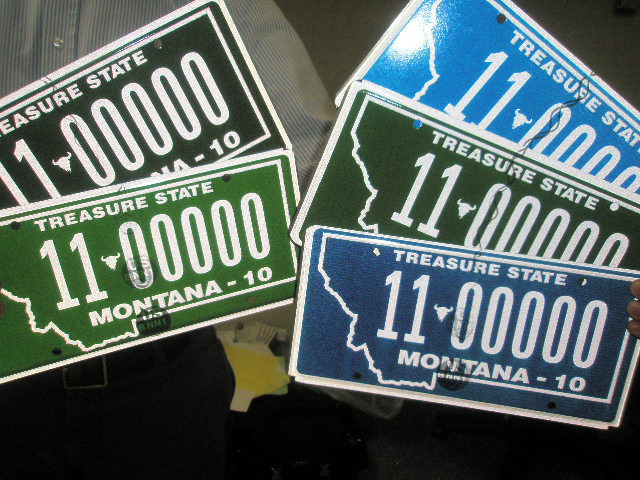(NEXSTAR) – For over one hundred years, our cars have had license plates. While it’s obvious personalized license plates can help you tell those around you a bit about yourself (unless your state rejected your idea), your standard-issued plate may carry an equally understandable message.
A regular license plate will typically come with a combination of letters and numbers. In Wisconsin, new plates have three letters and four numbers (it used to be three and three, until all combinations were exhausted) In California, standard plates follow a certain pattern: number, three letters, then three numbers. The state is on its last sequence, which begins with 9, and expects to run out of combinations in 2027, a spokesperson tells Nexstar.
Mostly, the only information you’ll be able to garner from a standard-issued license plate is how old it is. Many states, like Wisconsin and California, are cycling through sequences.
In Illinois, for example, new plates have been following a AA 11111 pattern since 2017. If you see an Illinois plate with an AA1 2222 series, it’s safe to say that plate is older than 2017. Texas is currently using a similar pattern of three letters and four numbers, which it expects to exhaust in about five years, a spokesperson tells Nexstar. Then, the state will flip to four numbers, three letters for passenger cars and trucks.
In other states, license plate codes are issued based on where the owner lives.
Montana is one of a handful of states that uses county codes on their standard plates. The process began in 1933 after several years of the state using prefix numbers based on “designated population centers as they existed in 1914,” according to the Montana Department of Justice.
Each of the state’s 56 counties now has a corresponding code that appears first on the standard-issued license plate. Those pictured below, for example, feature the number 11, meaning they belong to a resident in Phillips County.

Colorado used the same process for nearly 70 years, with some variations, before adopting a three-letter, three-number style in the 2000s, according to Colorado Public Radio. Thousands of residents who registered with the state were able to keep their geographically identifiable plates.
Other states using county codes on license plates include Idaho, Wyoming, South Dakota, Nebraska, Mississippi and Alabama.
Massachusetts, Missouri and West Virginia use state-specific codes – either a certain letter, number, or combination – to show the month in which the car’s registration expires. Like other states, though, they use stickers for the expiration year.
Outside of the states using certain codes, there isn’t much rhyme or reason to currently issued standard license plates.
For example, some believed the first number on the California license plates relates to the car’s model year. As mentioned above, it has nothing to do with the model year, though it could align depending on when the car is purchased.
The same is true for Ohio, an official tells Nexstar. The state is currently using a three-letter, four-digit series on standard plates, and is in the ‘K’ section, meaning plates appear like KBD1000. So if you get KBD1001, that simply means your plate was next in line after KBD1000 was made.
So the next time you find yourself on a road trip, instead of license plate bingo, you can use this knowledge to decipher the plates around you.





















